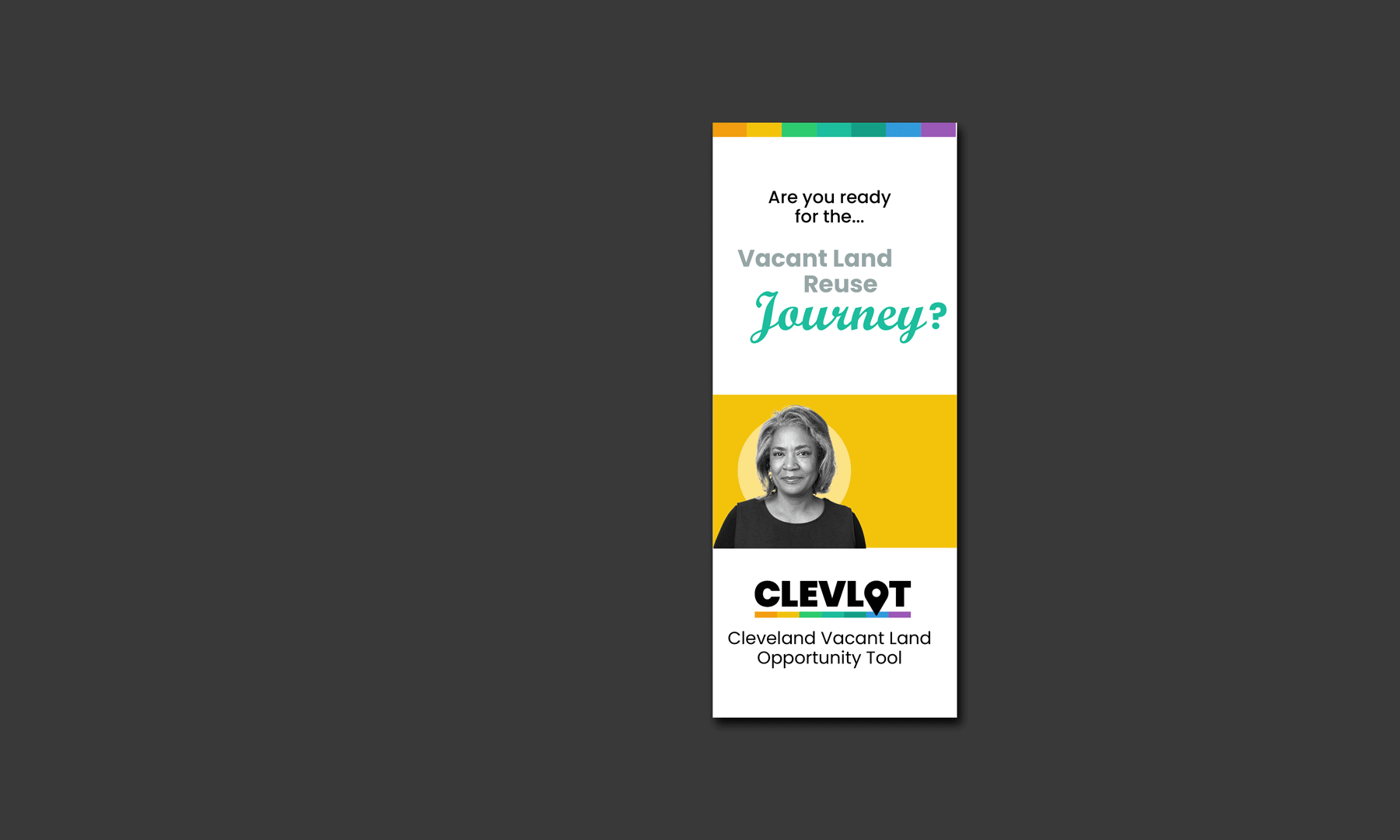
Process Transparency & Community Engagement
Process Transparency & Community Engagement
Focus Area:
Effectively communicate the process of acquiring vacant land and ensure that community members feel empowered and prepared to use the CLEVLOT tool.
Working Group Process

01
Problem Statement:
For residents, organizations, and developers wanting to reuse/revitalize vacant land, there is a lack of clarity around the process of acquiring land from the City of Cleveland Land Bank resulting in delays, lost investments, and diminishing trust.
Goals:
Technology can be a barrier for some community members, so our solution should recognize this user need.
Visualize the process in a clear and accessible manner for those that are responsible for disposing of land.
We should create a “fluid system”— answers “who?”, “how?”, and provides reliable customer support.
Communicates an identified and reliable timeline.
Enable everyone to use the same tool—a shared resource. (Ex. Land Bank University)

02
Prototype Proposal:
A print and digital graphic representation of the vacant land reuse process for residents and organizations that identifies areas for community involvement.
03
Present Prototype to Other Working Groups:
See slides below for a summary of the prototype development process at Stakeholder Summit 3.0 held at Cleveland City Hall.

04
Prototype Development:
Updated visualization of the vacant land reuse process and available resources in a printed brochure format.

04.5
Results from Focus Group:
What kind of training would be most useful for you?
Connecting with project leaders was considered a "critical" part of the process, and building relationships with neighbors to collect resources and address issues. Participants commented on the need to evaluate the applicant's capacity to take on a project. When you start from asking what your capacity is, you can learn what you have and what you need, which triggers education.
What would be an effective way to inform you about reuse opportunities?
Communicating through block clubs, especially presidents' meetings. Block clubs usually use email to keep in touch. Having something like a physical place where people can go to access information, like a library, would also help.
If you applied for a vacant lot, what in the process did you find most frustrating?
Lack of information and responsiveness from the City, especially about expectations on when information would be available.
05
Review of Prototype Testing Process:
How successful do you feel your prototype was at helping you better understand the problem? What did you learn from the prototype development process?
“This process helped me to understand that there are a number of variables in the process and that different entities/people might approach this from any one stage of the “journey.” Therefore, there was a need to bring them into the journey at any stage— did they see a lot and get interested in finding an idea or did they get an idea and need a lot? I think this prototype of a “journey” does a pretty good job of recognizing different starting points without being graphically confusing.”
“I think our prototype worked well to identify the challenges of those seeking to secure a vacant lot. Most of the challenges have to do with a lack of information access, and an overly complicated series of steps that individuals have to follow in order to gain that access.”
“It demystifies the process and provides some clarity on general steps to go from a vacant lot to a vibrant lot”
What are the most important updates you'd like to see for this prototype before it is launched to the public?
The land bank application includes questions about about funding. Should funding sources be researched before the land bank application is submitted?
Organize community - suggest this goes much earlier in the process, or be a repeat "step" so that there are check-ins with the community along the way. Definitely would want this around the stages of 2, 3, 4.
More detail in some parts.
An interactive portal that helps users identify their project.
Naming of resources to include.
Each step along the way needs to have resources identified.
Reaching out to the community should probably happen at the beginning of the project (whether it's development or a community garden).
Links to appropriate organizations.
A dissemination of printed information through libraries and community centers.
Identifying of main contact for vacant land support.
Identify a "landing site" for the resources mentioned this may be online or a physical space.
In "research and pick lot", I don't know what "develop a checklist" means. Also development vs. side yard vs. garden may be unfamiliar and may not fit each project perfectly. Maybe best to rephase these two steps to be more clear and include the information on the website.
A quarterly open meeting where individuals can access help and ask questions.
Connectivity to other prototypes.
Pilot the prototype with several residents interested in securing a vacant lot.

06
Final Prototype:
A printed brochure depicting steps in the Vacant Land Reuse Journey with corresponding available resources.
Members
Co-chairs:
Bianca Butts, Burten Bell Carr Development
Cathi Lehn, Cleveland Office of Sustainability & Climate Justice
Members
Sarah O’Keefe, City of Cleveland
Marcelina Śladewska, Cuyahoga County Land Bank
Zaija Pelligree, The Cleveland Foundation
Jeremy Johnson, Assembly for the Arts
Brian D. Siggers, Ohio Environmental Council
Tony Brancatelli
Mikki Smith, Little Africa Food Cooperative
Khalid Ali, Western Reserve Land Conservancy
Doan Winkel, John Carroll University
Jacqueline Feldman, Zygote Press
Sara Continenza, Food Strong
Julie Slater, Meadow City Native Plant Nursery
Kimberly Smith-Woodford, Journey on Yonder

Join a Working Group
The Process Transparency & Community Engagement Working Group meets monthly at 3:00pm on the last Wednesday of every month. Meetings are primarily held online via Zoom, but may include some in-person sessions.
Join the working group below to receive an invitation to participate in the next meeting.










